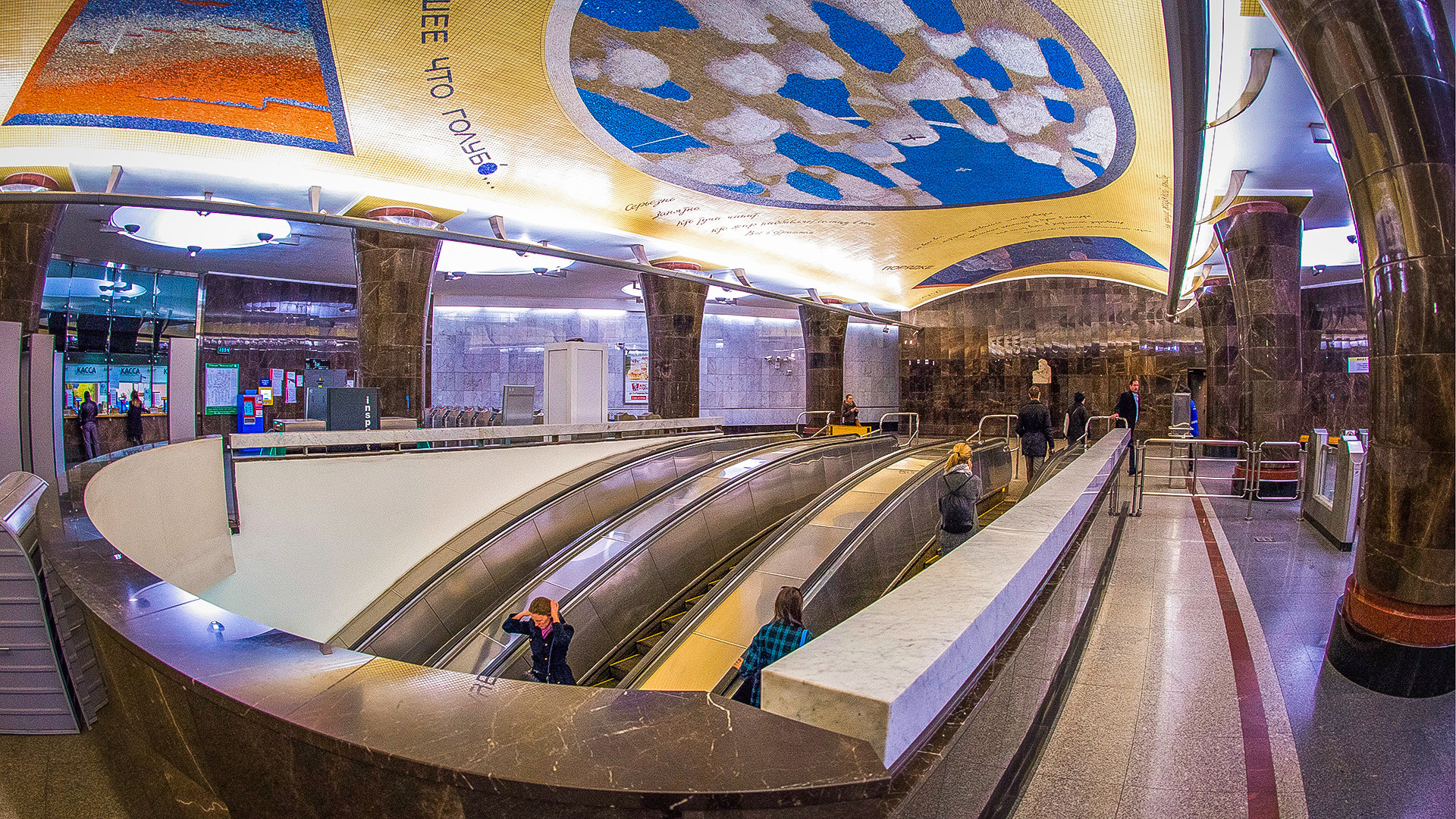
Mayakovskaya metro station
Nikolay Galkin/TASS
This station was built in 1959 on a bridge spanning the Moskva River – the first station of its kind in Russia. In the 1990s the station was renovated, and since 2010 it has been used as an exhibition hall for porcelain, dolls, animal sculptures and period costumes. If you are lucky, you might have the chance to see a seasonal exhibition dedicated to Russian achievements in sports or space exploration.
19. Spartak
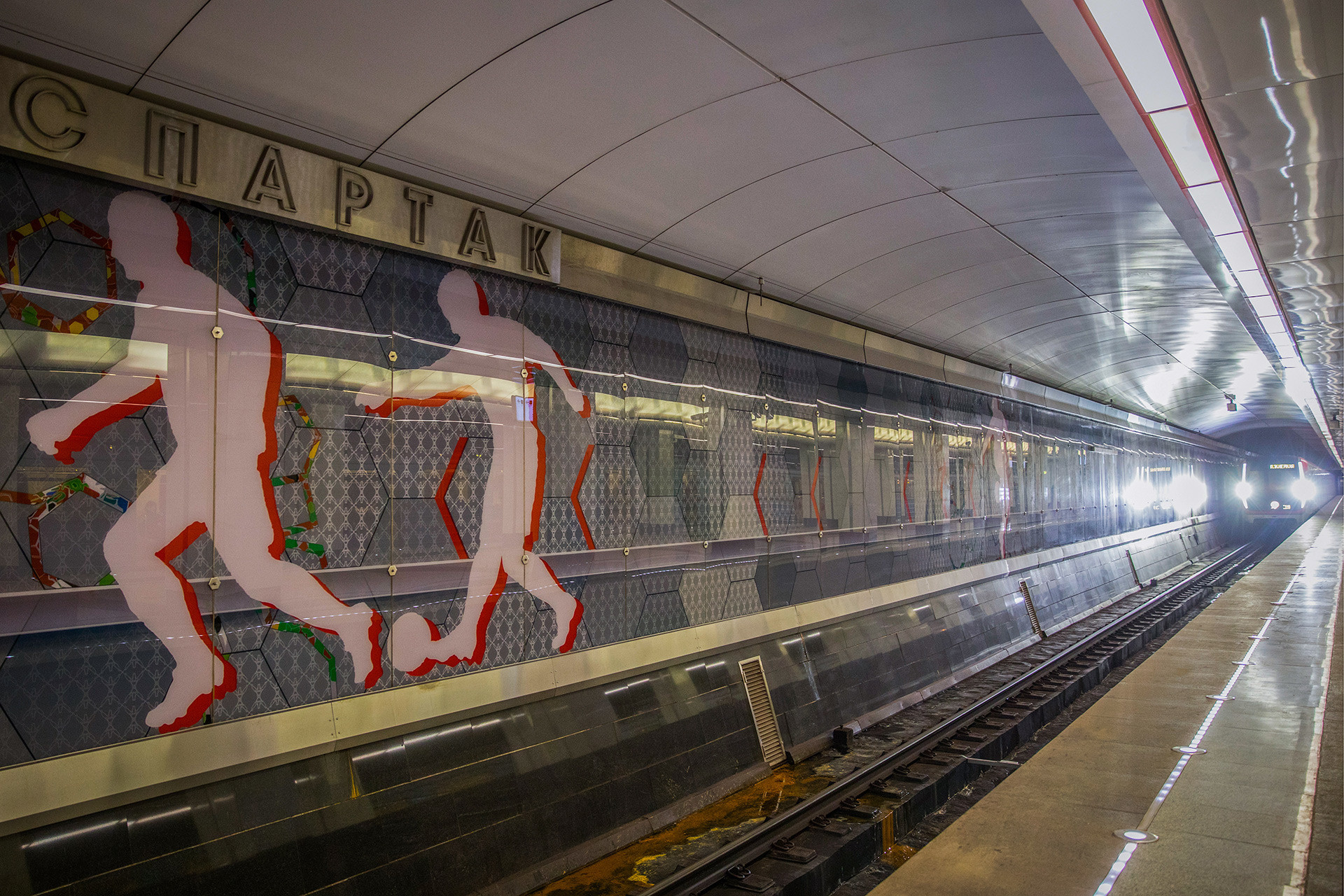
Construction began on this station in the 1970s, but the project was eventually frozen due to mismanagement. It opened
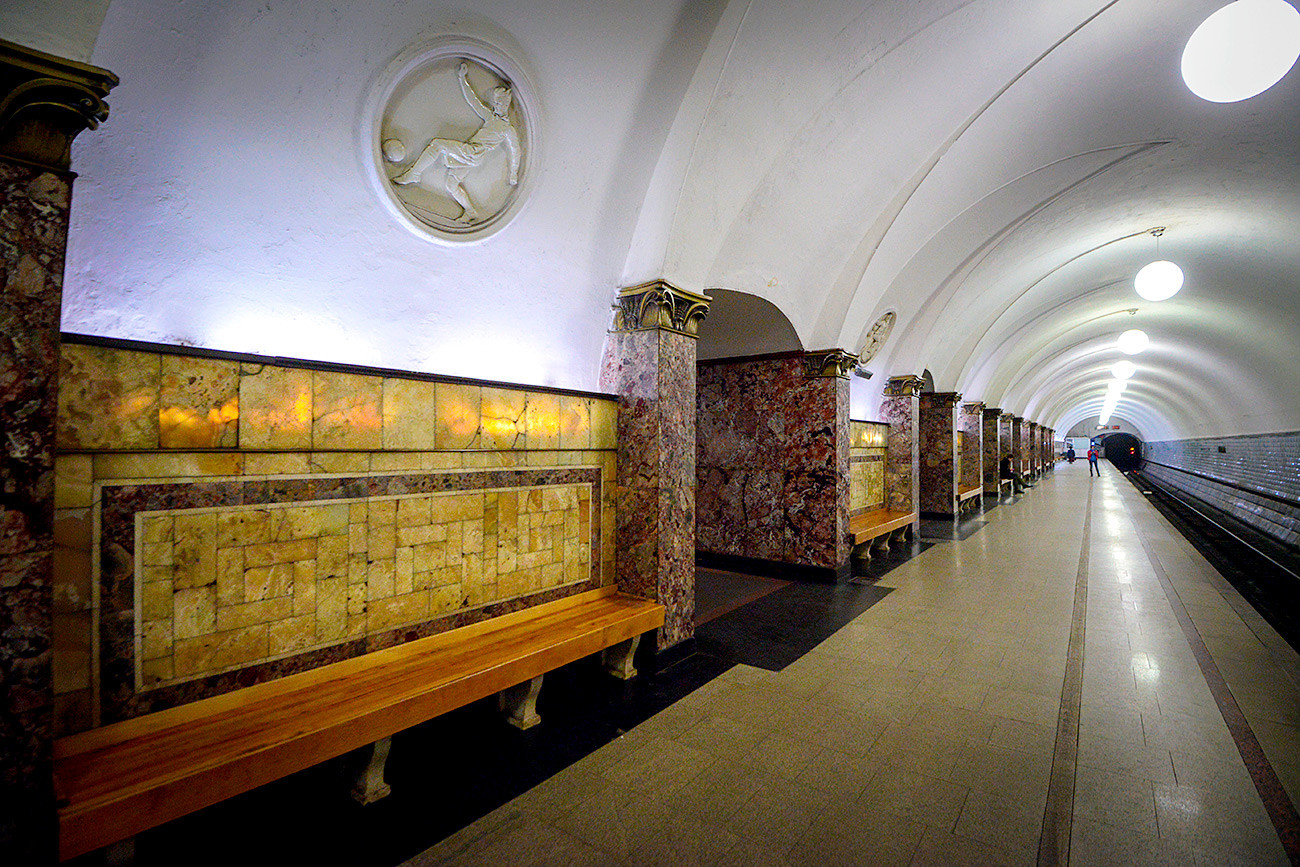
Underground, the decor is more restrained and includes seven types of marble. The walls are decorated with porcelain medallions that show scenes featuring different athletes.

Opened in 1935, it was the world’s longest underground station at the time, but it has since lost that title. (The longest station is now Vorobyovy Gory.) Marble was used to
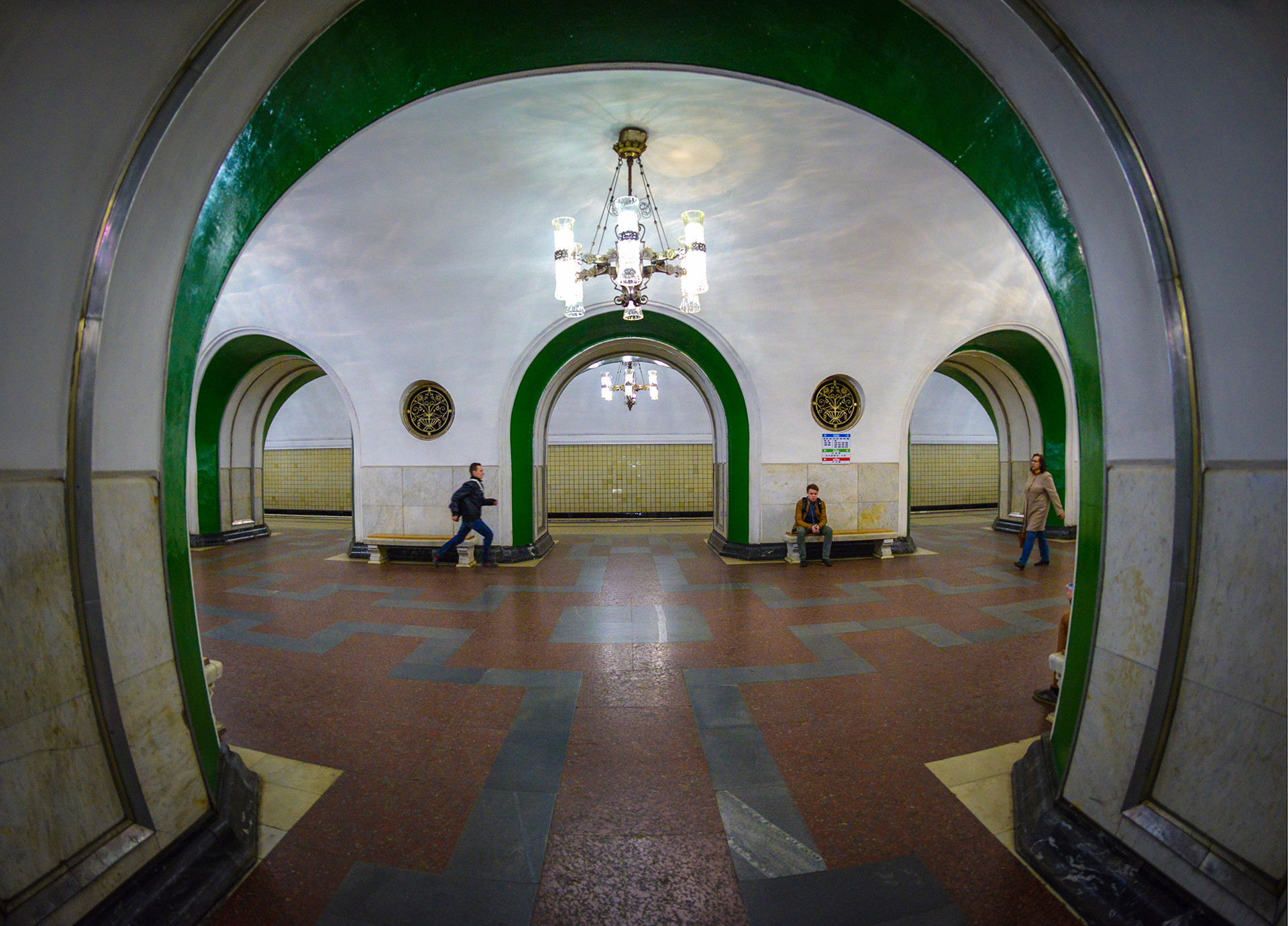
This station brings you to the famous Exhibition of Achievements of National Economy (VDNKh) that showed off the USSR’s greatest industrial successes. The multiple thematic pavilions have been renovated and offer a wide range of entertainment: museums, sports, aquarium
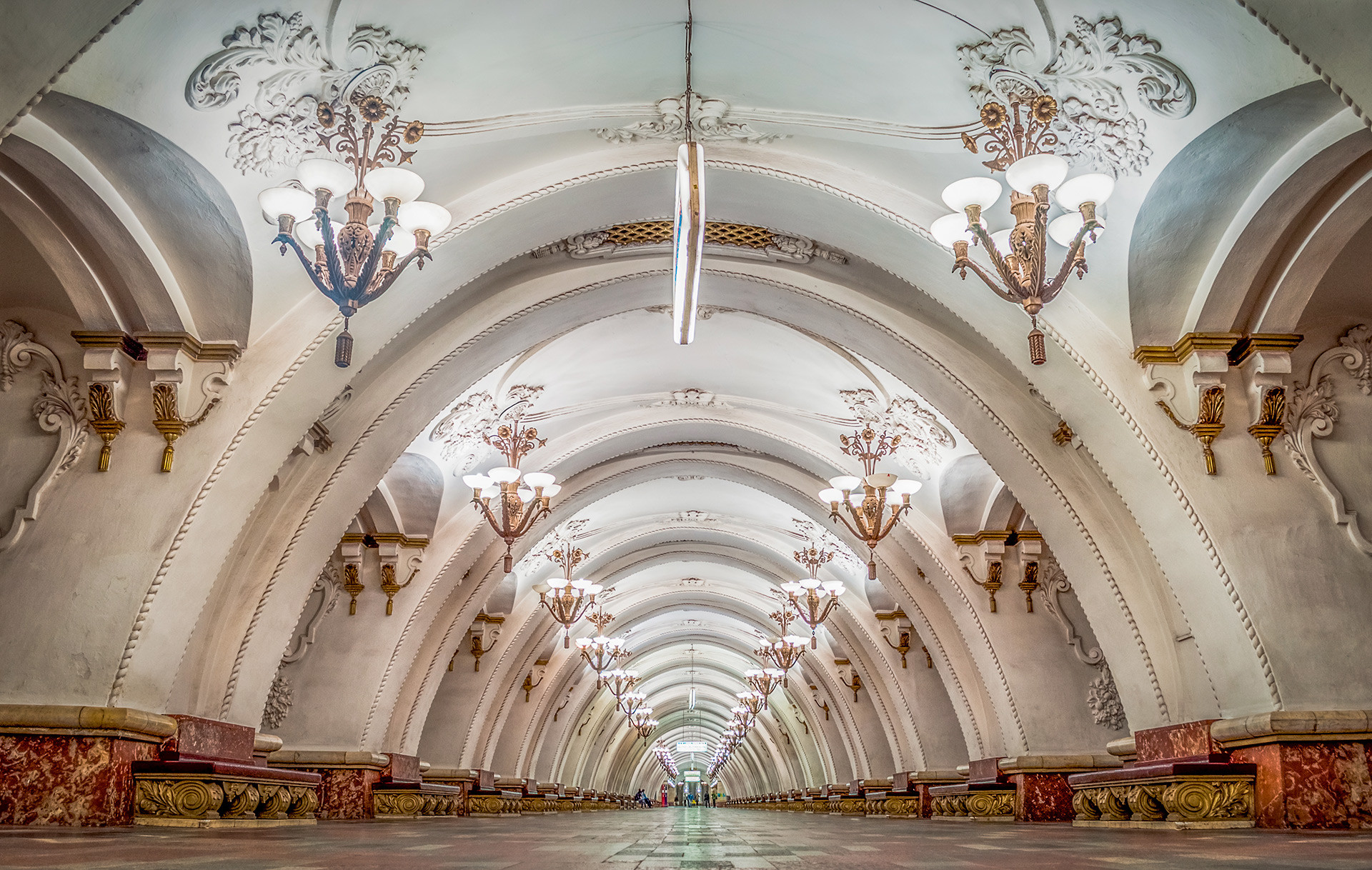
This station was designed by Leonid Polyakov, the architect who built one of the seven Stalinist skyscrapers. The station’s floor is made of multicolored granite slabs that form a distinctive carpet pattern, and its pillars are decorated with white ceramic bouquets. The chandeliers are made of gilded bronze. Since Arbatskaya is next to the Defense Ministry headquarters there is an urban legend that it was designed so that in case of a major war it could be quickly converted into an emergency bunker for military officials.
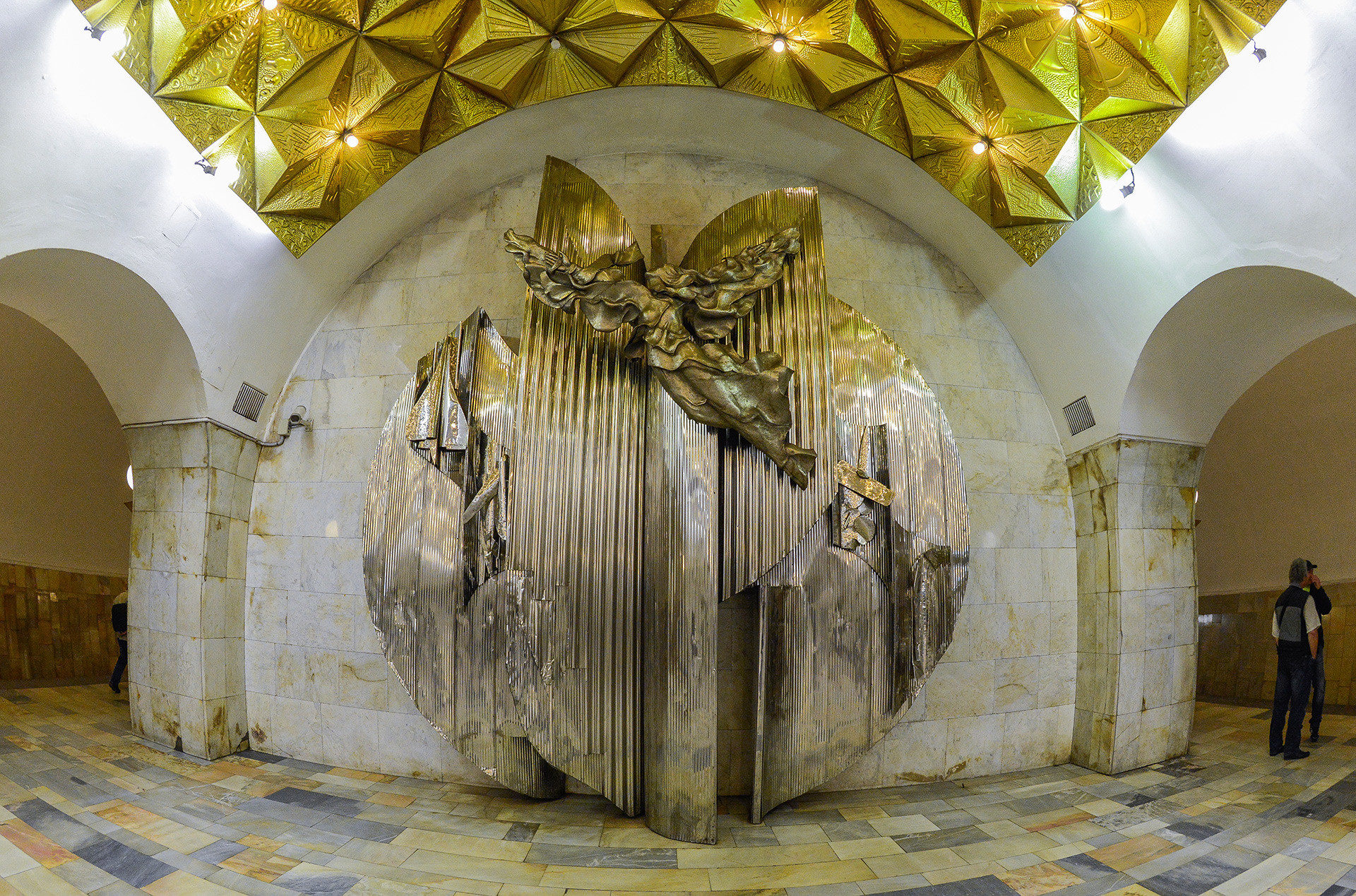
The decoration and name of this station are dedicated to aircraft engine designers. The metal sculpture at the end of the hall shows Icarus flying over ascending airflows.
The station’s roof is styled to look like a magic carpet, consisting of numerous gold anodized pyramids with two types of images: sun rays and night stars.
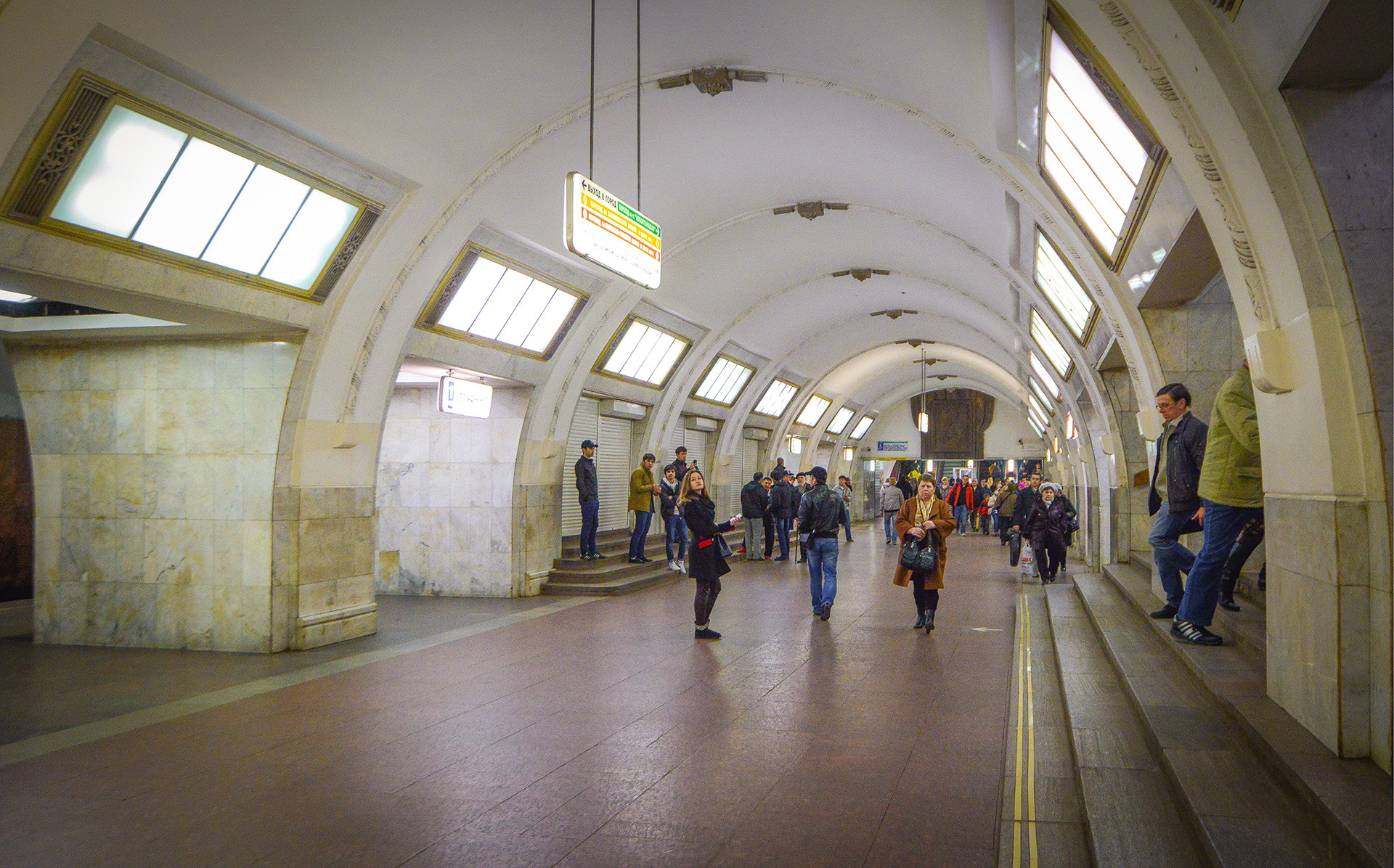
This station leads to the famous State Tretyakov Gallery, the foremost repository of Russian fine art in the world. The station walls are decorated with bronze bas-reliefs that celebrate Russian artists, sculptors and icon painters. Above the

This is the closest station to one of the oldest circuses in the capital - the Moscow Circus on Tsvetnoy Boulevard, and it was designed appropriately. For instance, in the
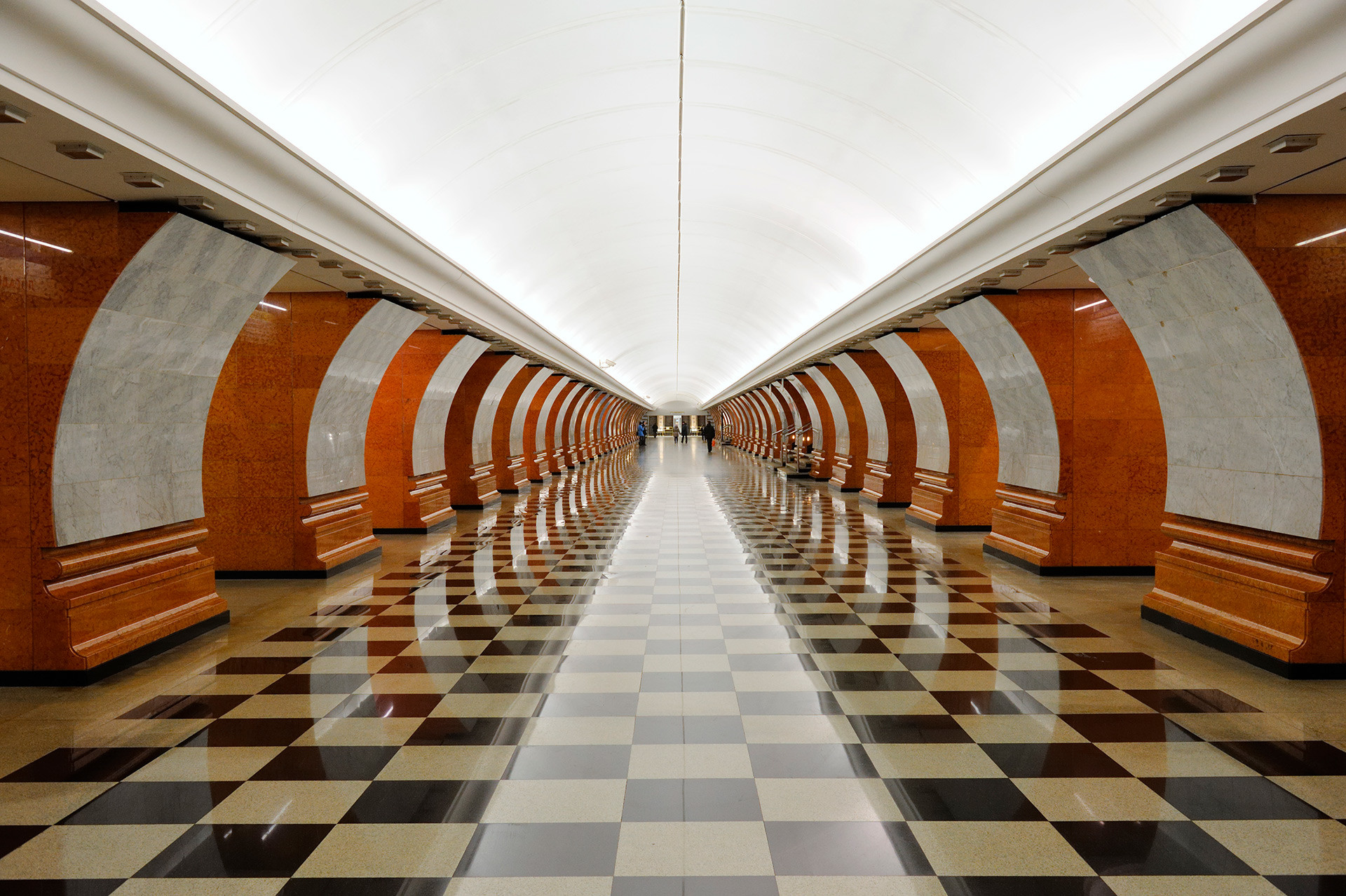
The interior is an ode to the great victories of the Russian people, including the War of 1812 against Napoleon and World War II. Designed by the famous Soviet and Russian artist, Zurab Tsereteli, the southern and northern halls each celebrate the two victories.
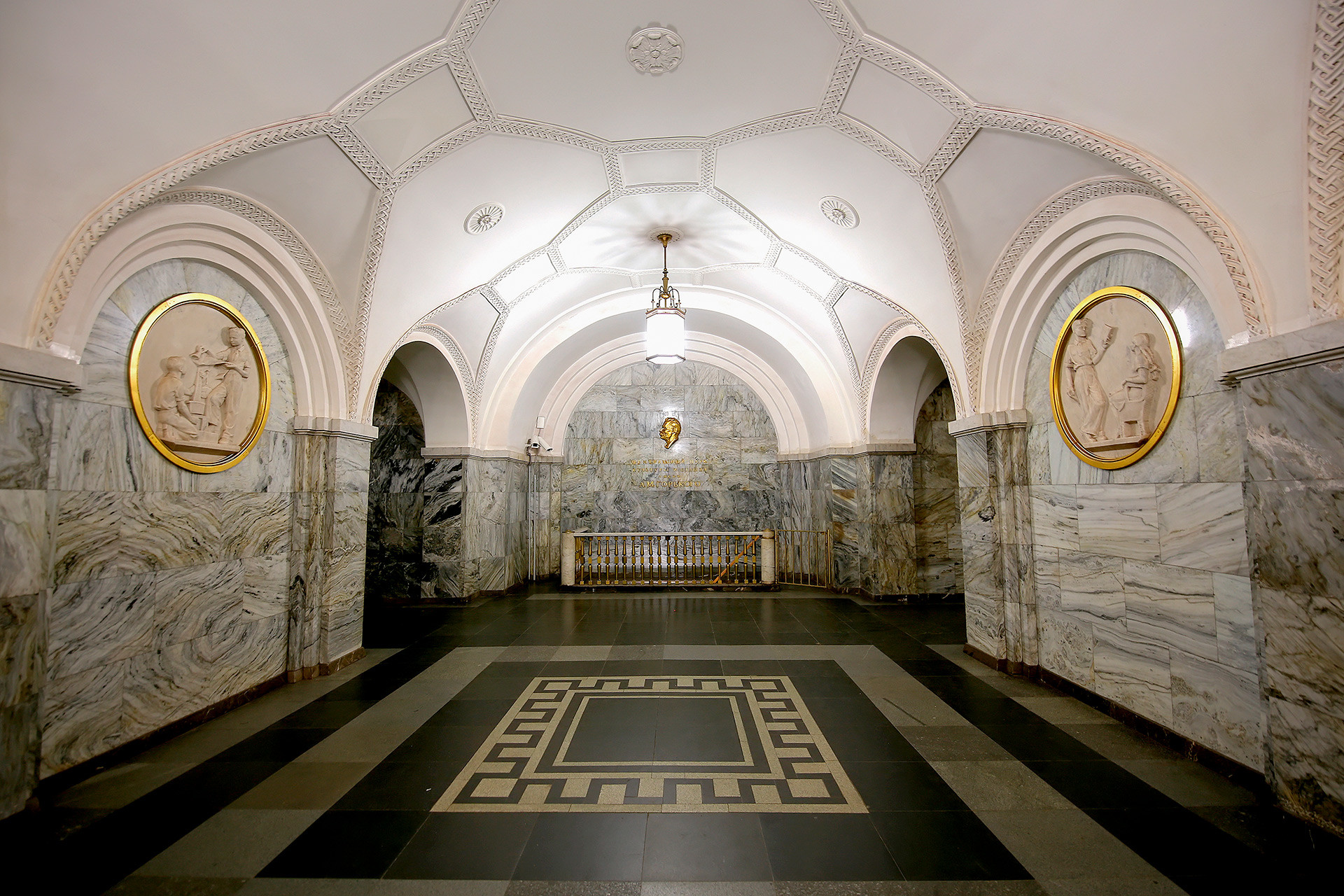
This station leads to Moscow’s main park, Gorky Park, and includes five types of marble, from veined light gray to black. Other features include chandeliers and marble bas-reliefs that depict the labor and leisure activities of the Soviet people, as well as activities at Gorky Park, including flying model planes, dancing and playing football and tennis.
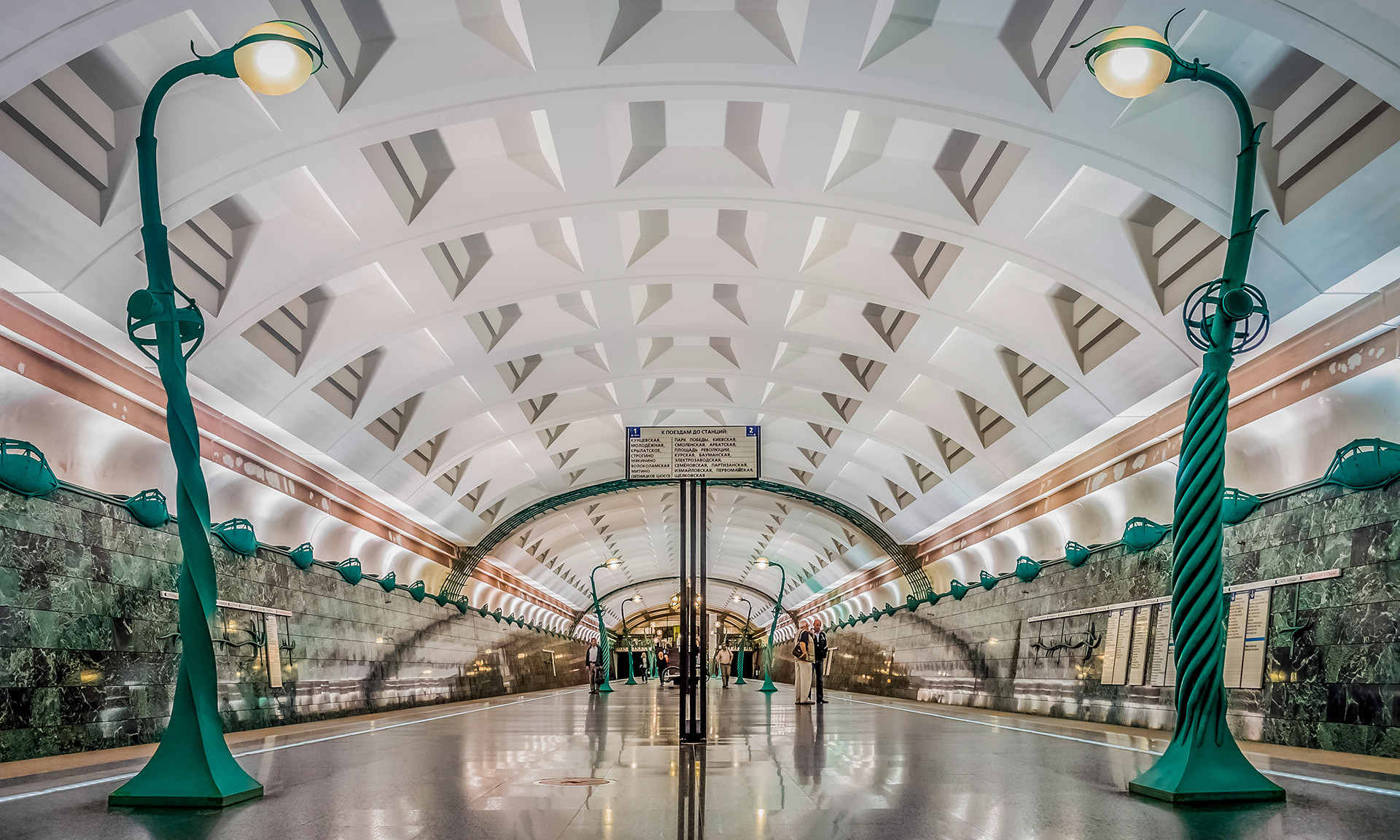
This modern station was opened in 2008. Nevertheless, it follows the aesthetic standards set by older stations. Inspired by the works of famous French architect Hector Guimard, Slavyansky Bulvar is peculiarly decorated with metal trees, branches
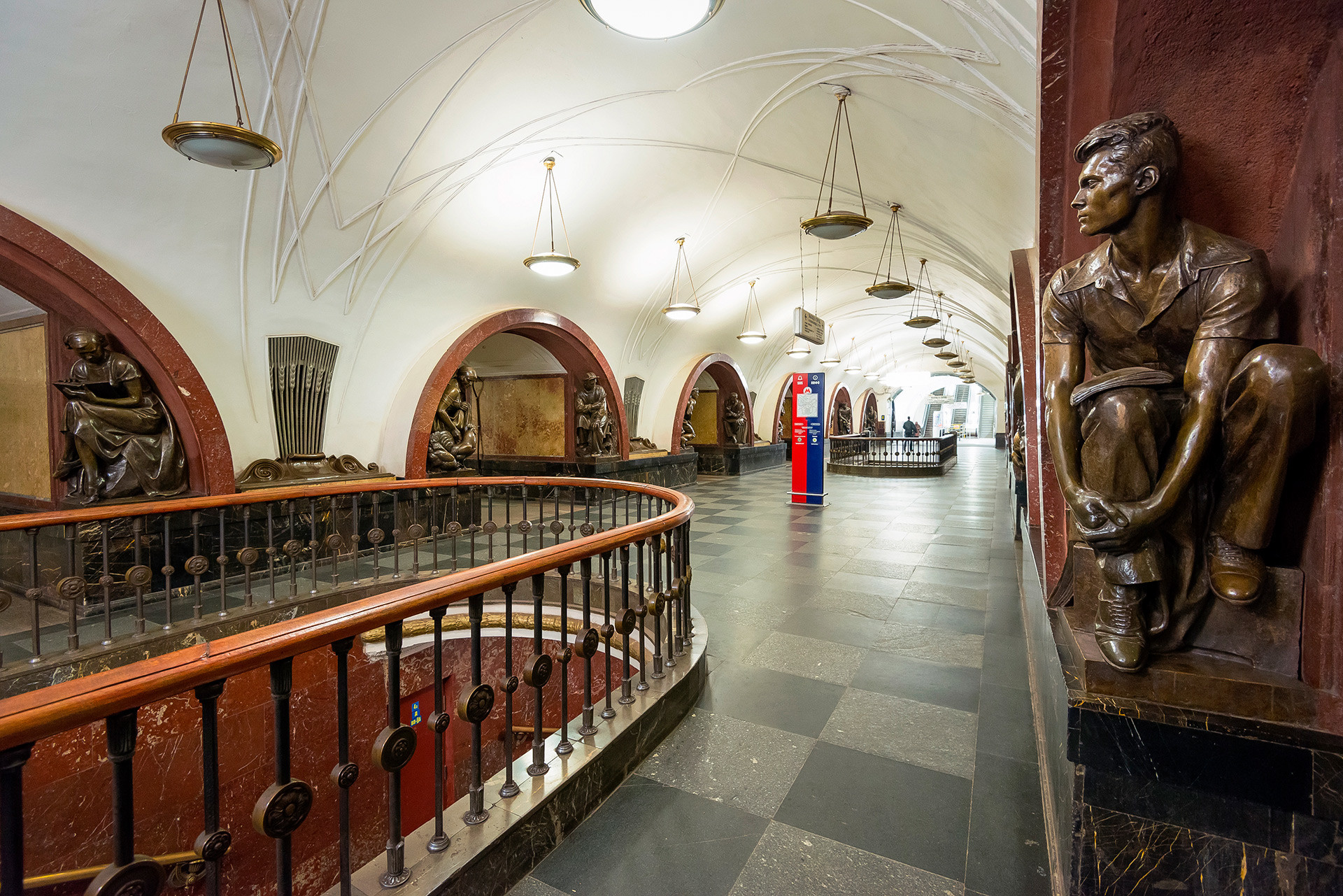
Ploschad Revolutsii is devoted to the Bolshevik Revolution of

Medieval architecture is the main theme of this station's design. Intersections of the arches create a kind of cross vault similar to those found in medieval Russian boyar chambers. The pillars are decorated with majolica panels in the style of the studio of Andrea
Instead of images of the Madonna on the walls, you’ll find profiles of heroes of the Soviet Army, such as sailors, tank operators
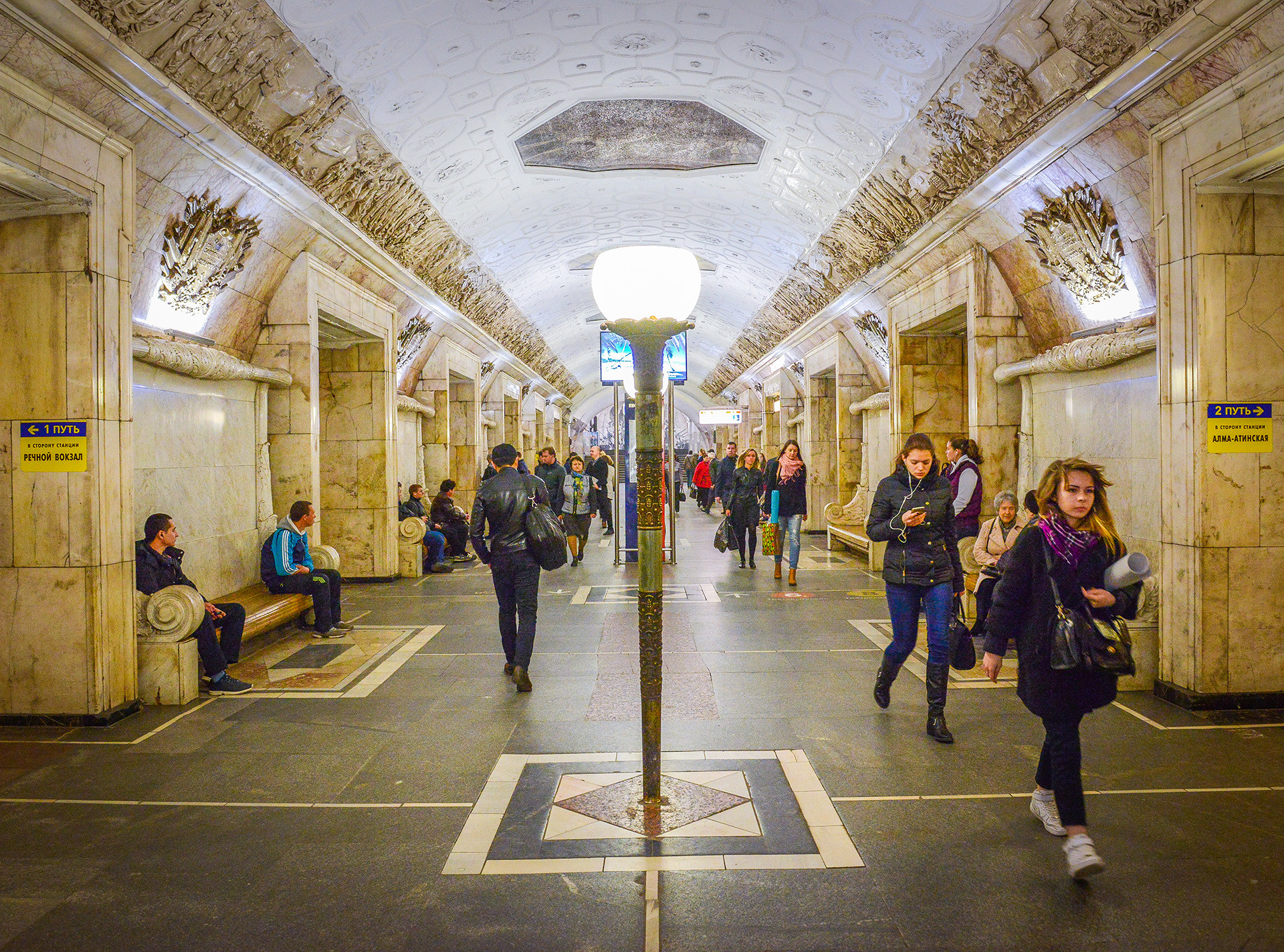
Despite being built during World War II, the station is luxuriously decorated. Enormous marble benches with Renaissance-style sculpted armrests line the platforms. Above this are bronze decorative medallions with pictures of flags, shields
The ceiling in the middle of the hall is decorated with giant brass chandeliers and six mosaics with motifs designed by Alexander Deineka that depict daily life in the USSR.
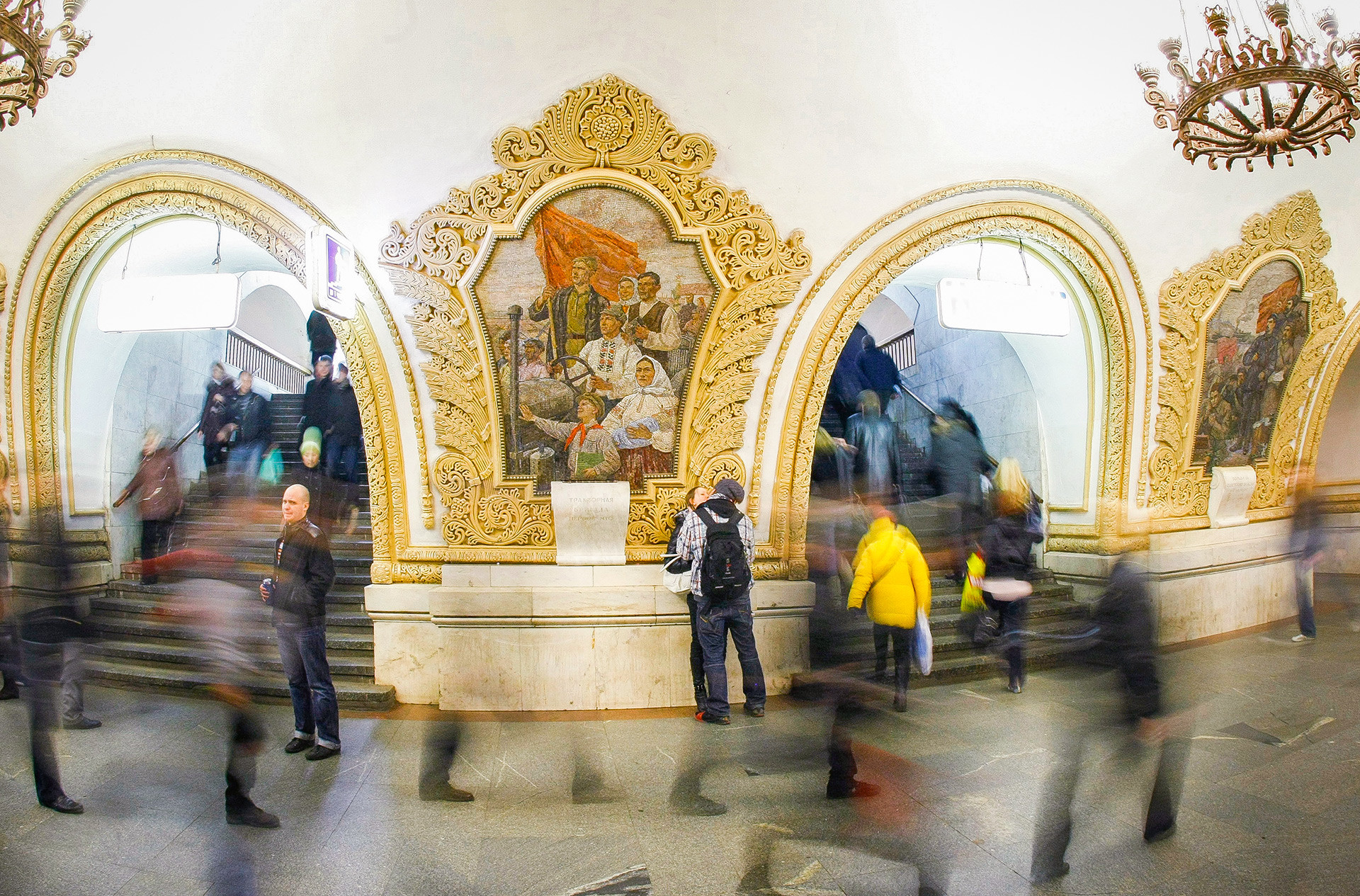
This station on the Circle Line was built under the personal supervision of Soviet leader Nikita Khrushchev. With its elegant decor and multiple mosaics, Khrushchev wanted to pay tribute to his Ukrainian homeland. Following the station’s opening, the Soviet leader fought excesses in architecture, thereby ensuring the unrivaled glory of this underground “palace.” The lobby, like those at other stations, is decorated with marble and granite, and the columns are decorated with 18 mosaic panels in the Florentine tradition. The bas-relief panels tell the history of relations between Russia and Ukraine, from the time of the Pereyaslav Rada in 1654 when the Cossacks swore an oath to the Russian Tsar, to the October Revolution in 1917.
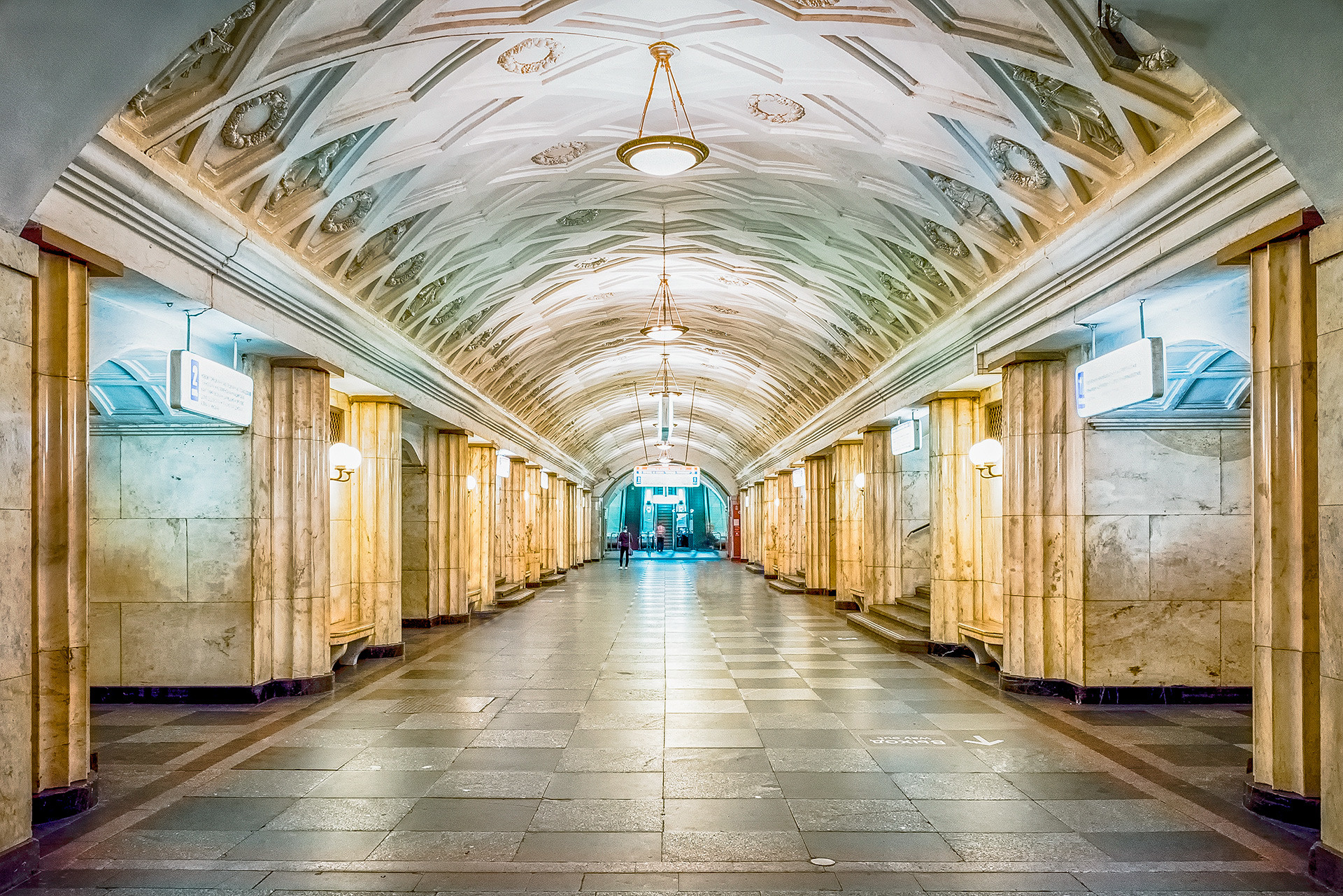
This station leads to the Bolshoi Theater, Red Square

This Art Deco masterpiece opened in 1938 and was designed by architect Alexey Dushkin. During
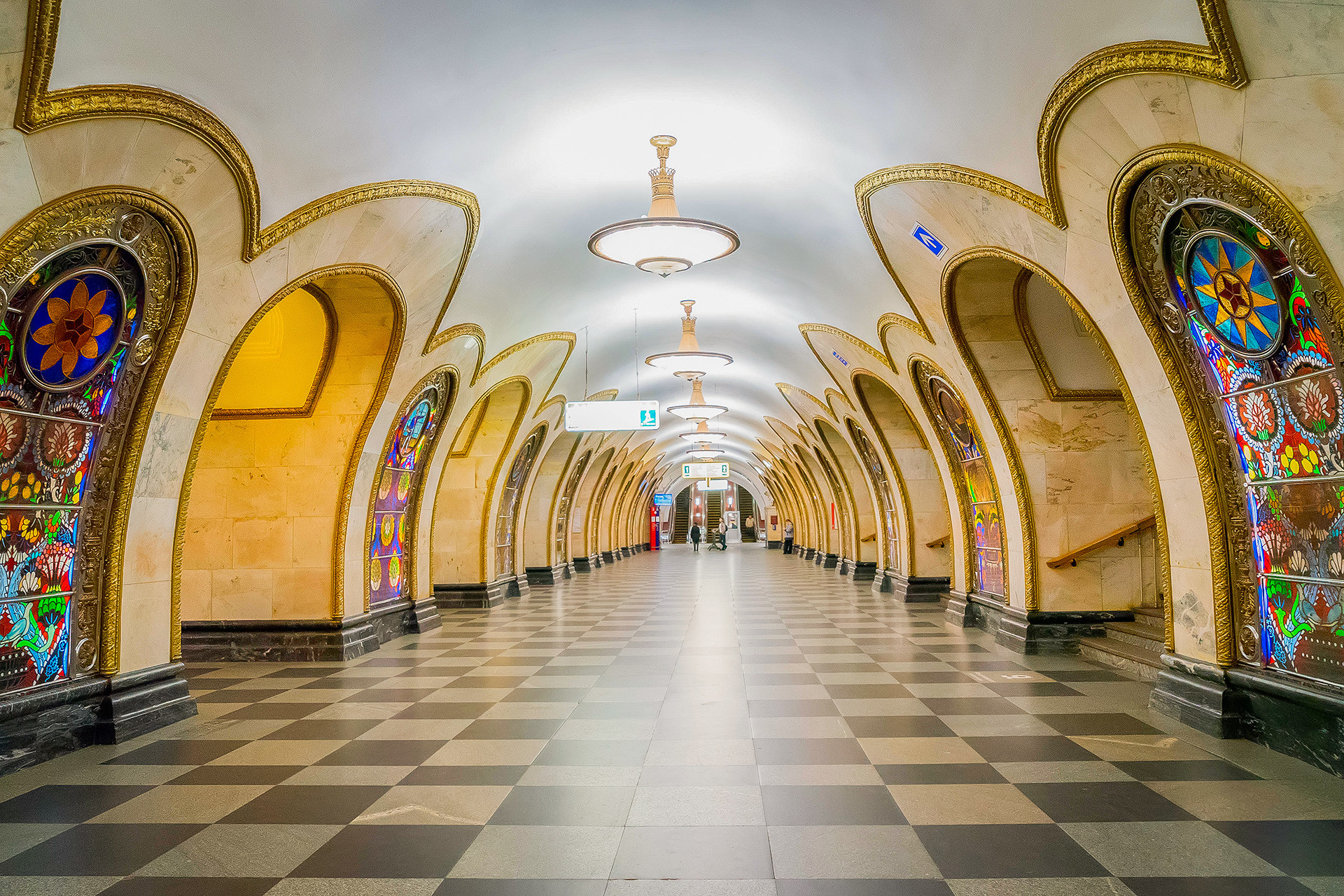
This station is best known for its 32 stained-glass panels designed by artist Pavel Korin. There is an urban legend that before its opening the architects were afraid that the station would resemble a Catholic church. Today, Muscovites liken it to an incredible underwater world.
Six of the stained-glass panels depict people from different professions including a musician, an agronomist
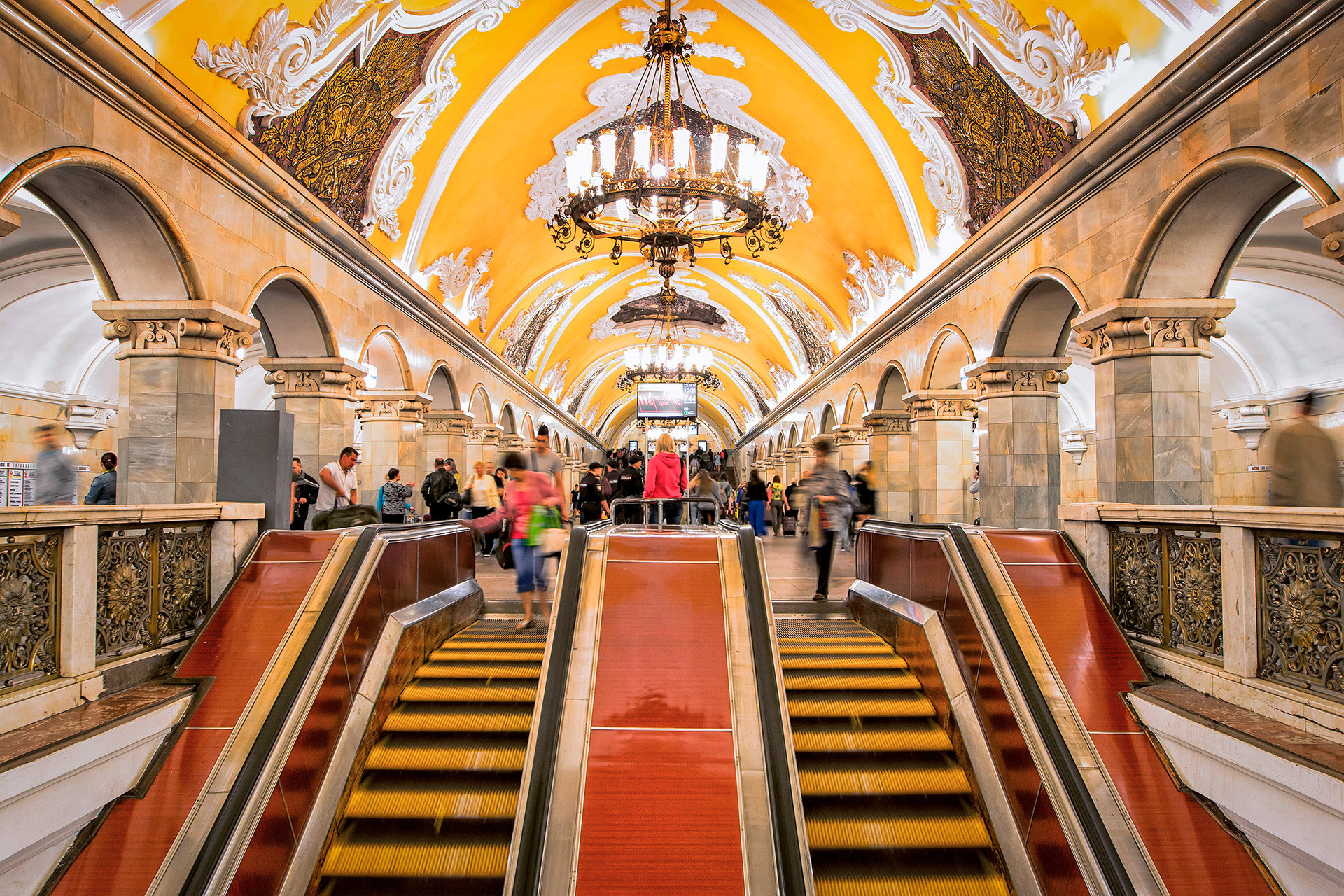
This station represents the high point of the Stalinist Empire style, with elegant bronze chandeliers, marble arcades and monumental mosaics made from smalt.
Today, the station is adorned with eight mosaic panels designed in the style of ancient church architecture. They depict famous Russian warriors, commanders, and revolutionary leader Vladimir Lenin, who is depicted giving a speech on Red Square.
Read more: Moscow FAQ: Here are answers that you won’t find in tourist guides
If using any of Russia Beyond's content, partly or in full, always provide an active hyperlink to the original material.
Subscribe
to our newsletter!
Get the week's best stories straight to your inbox